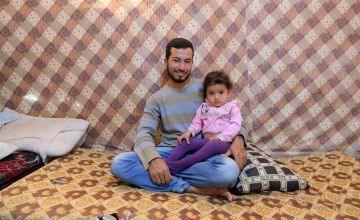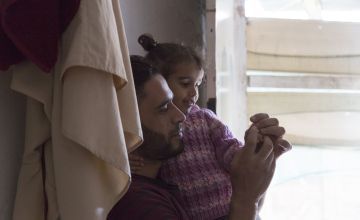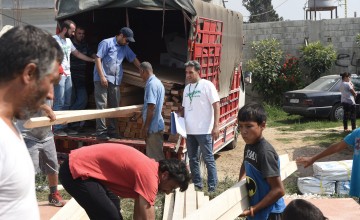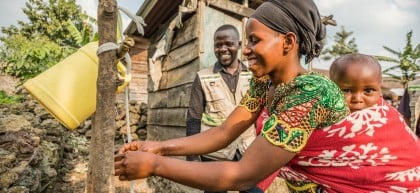
Knowledge Hub
Lebanon: bearing the weight of another country’s crisis

With Syrian refugees making up a quarter of its population, Lebanon still has the highest per capita concentration of refugees in the world. A country already suffering from weak services and infrastructure, Lebanon’s population has increased by around 25% since the start of the Syrian conflict in 2011. As a result, public health is deteriorating and living conditions are worsening, severely affecting the lives of both the refugees taking sanctuary and the host population.
Since 2011 when the Syrian war began, 13.5 million people have been forced to flee their homes. Many have not left Syria and instead are ‘internally displaced’, continually moving around the country in a desperate attempt to escape the fighting. However, according to the UN, almost six million people have fled the country.
Forced to flee, but where to go?
In 2015, the UK government committed to take in 20,000 refugees by 2020 under a scheme set up to support people fleeing the Syrian conflict. By June 2019, 17,051 Syrian refugees had come to the UK through this scheme. Overall, UNHCR has counted approximately 1,000,000 asylum applications for Syrian refugees in the European Union, with 70 per cent being hosted in two countries only: Germany and Sweden. So, if six million people have fled Syria, and one million are in Europe, where are the other five million?
Almost 85 per cent of the world’s refugees are hosted by developing countries. Neighbouring and nearby countries to Syria have generously welcomed more than 5.6 million Syrian refugees – the vast majority worldwide. Turkey continues to host the largest refugee population in the world, including over 3.7 million Syrians, while Lebanon and Jordan are among the countries with the highest number of refugees per capita globally. These countries are under increased financial pressure, especially in light of the devastating socio-economic impact of the Covid-19 pandemic.
Lebanon has often been at the centre of Middle Eastern conflicts because of its borders with Syria and Israel and because of its own conflict. Over the years, Lebanon has continually offered refuge to those forced to flee the incessant violence in Syria. The number of Syrian refugees registered to be living in Lebanon is almost one million (the same amount that the entirety of Europe has taken in), and in a country where the overall population is just under 7 million, it is unsurprising that the inundation of people seeking shelter there is now taking its toll.

Drastic consequences
Socially, even the most remote Lebanese communities are feeling the pressure of this massive population growth with Syrian refugees now living throughout Lebanon in more than 1,700 localities, outnumbering local residents in some areas. 58 per cent of the 1.3 million poorest Lebanese live in urban areas and are assumed to be the population most affected by the overcrowding created by the mass influx of refugees. [Habitat for Humanity]
Lebanon has shown remarkable generosity; far more than many other countries that are likely to be much better equipped to help those fleeing for their lives. However, because of these factors, increased competition for jobs and resources – in particular, housing – is fuelling tensions between Lebanese host communities and Syrian refugees.
Economic distress
The Syrian conflict has also had a heavy economic and social toll on Lebanon. Lebanon has faced a deep economic and financial crisis since late 2019, which has been exacerbated by the Covid-19 pandemic and the devastating explosions in the Beirut port on 4 August 2020.
Lebanon is enduring a severe, prolonged economic depression: inflation has reached triple digits, while the exchange rate keeps losing value. Over 90 per cent of Syrians live in extreme poverty in Lebanon, along with an increasing number of the communities that host them. The situation is creating hunger, increased debt and mental and physical health problems, as well as increasing risks of evictions, exploitation, child labour and gender-based violence.

Lebanon has been shaking at the knees in an attempt to hold up the heavy load that the Syrian war has brought. If we can’t – or won’t – share the load with regards to how many refugees our countries take in, we must help those upon whom the load has fallen.
What we're doing to help
We have worked in Lebanon since 2013, where we first established programs in response to the Syria crisis and where we have since been responding to the increasing humanitarian needs in the region for both refugees and host communities. You can find out more about our work in Lebanon here.
As of June 2020, our Covid-19 response reached 3,098 individuals through awareness-raising sessions and the distribution of hygiene kits. We also rehabilitated an isolation facility for Covid-19 cases. Additionally, in 2019, 2,261 adults and children benefited from Engaging Men and Women and psychosocial-support sessions.






